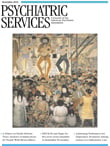National Survey Finds Increased Substance Use From 2008 to 2009
In 2009, an estimated 21.8 million Americans aged 12 and older (8.7%) were current (past-month) illicit drug users, according to data from the National Survey on Drug Use and Health (NSDUH). This rate has increased since 2008 (from 8.0% to 8.7%), driven in large part by increases in marijuana use (from 6.1% to 6.8%). The survey also shows that the nonmedical use of prescription drugs rose from 2.5% to 2.8% in the same period. In addition, the estimated number of past-month ecstasy users rose from 555,000 to 760,000, and the number of methamphetamine users rose from 314,000 to 502,000.
Flat or increasing trends of substance use were reported among adolescents (ages 12 to 17). Although the rate of overall illicit drug use among adolescents in 2009 remained below 2002 levels, the rate was higher in 2009 than in 2008 (10.0% in 2009, 9.3% in 2008, and 11.6% in 2002).The rate of marijuana use in this age group followed a similar pattern, declining from 8.2% in 2002 to 6.7% in 2006, remaining level until 2008, and then increasing to 7.3% in 2009.This finding is not surprising because the percentage of adolescents perceiving great risk of harm associated with smoking marijuana once or twice a week dropped from 54.7% in 2007 to 49.3% in 2009, marking the first time since 2002 that less than half of adolescents perceived great harm in frequent marijuana use.The rates of current tobacco use and underage drinking in this group remained stable between 2008 and 2009. Current illicit drug use among young adults aged 18–25 increased from 19.6% to 21.2% between 2008 and 2009. This rise in use was also driven in large part by increased use of marijuana (from 16.5% to 18.1%).
Despite some troubling trends, the 2009 NSDUH shows continued progress in lowering levels of tobacco consumption among people aged 12 and older. Current cigarette use in this population has reached a historic low level at 23.3%. In addition, the use of cocaine in this population has declined 30% since2006 (from 1.0% to .7%).
Much like previous years, the 2009 NSDUH shows a vast disparity between the number of people needing specialized treatment for a substance abuse problem and the number who actually receive it. According to the survey, 23.5 million Americans (9.3%) need specialized treatment for a substance abuse problem, but only 2.6 million (11.1% of those who need treatment) receive it.
NSDUH is a scientifically conducted annual survey of approximately 67,500 people aged 12 and older throughout the country.Because of its statistical power, it is the nation's premier source of statistical information on the scope and nature of many substance abuse behavioral health issues affecting the nation. The 98-page Results From the 2009 National Survey on Drug Use and Health: Volume 1: Summary of National Findings is available on the Substance Abuse and Mental Health Services Administration Web site at oas.samhsa.gov/nsduhLatest.htm .



